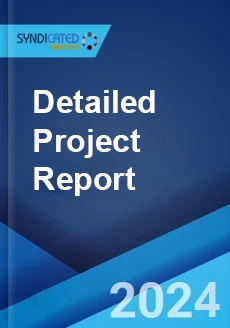
E-commerce Payment Market: Global Industry Analysis, Market Size, Share, Trends, Application Analysis, Growth and Forecast, 2023-2028
“Global E-commerce Payment Market: Industry Analysis, Market Size, Share, Trends, Application Analysis, Growth and Forecast, 2023-2028” provides a deep and thorough evaluation of the global e-commerce payment market. E-commerce payment refers to a system that allows users to make digital payments in exchange for products or services. Some most commonly used e-commerce payment methods include credit cards, mobile wallets, debit cards, prepaid cards, and internet banking. It facilitates commercial transactions electronically via the internet without using cash or cheques. It simplifies the entire checkout process for both customers and sellers and offers several benefits, such as a user-friendly platform, minimal documentation, and higher profit margins. Compared to traditional systems, e-commerce payment methods are faster, more efficient, easier to use, less time-consuming, and available round-the-clock. As a result, e-commerce payment solutions are rapidly gaining popularity across the globe.
The global e-commerce payment market is primarily driven by shifting consumer preferences toward online shopping and mobile purchases. Moreover, continual improvements in the digital ecosystem and the rising penetration of the internet and wireless networks are contributing to market growth. Additionally, there has been a substantial shift toward e-commerce payment methods among individuals due to the growing awareness regarding their advantages. For instance, they are more secure with various security tools, such as encryption, tokenization, and SSL, to eliminate the need for customers to enter card details for every transaction, as single-factor authentication allows them to provide a one-time password (OTP), which then saves up the card details. Besides this, online money transfers do not share user data with the merchants and enable consumers to purchase goods on credit and pay later, thereby offering a smooth experience. This, coupled with several favorable initiatives by governments of numerous countries to promote online payment methods to reduce tax fraud and encourage collaborations between small businesses and e-commerce giants, has propelled the market growth. Apart from this, the increasing UPI transactions owing to the extended limit on contactless payment cards have accelerated product adoption rates. Furthermore, the widespread integration of multi-channel payments by businesses to provide more flexibility to customers has catalyzed market growth. Other factors, including the emerging trend of cross-border e-commerce, technological advancements, inflating consumer expenditure capacities, and rapid digitization, are also anticipated to drive the market further.
Beginning with a global overview, the report explores the dynamics that have a strong influence on the e-commerce payment market and can also impact its future growth. Taking 2022 as the base year, the report covers the historical market scenarios from 2017-2022 and provides forecasts till 2028. This includes the study of value and volume trends and pricing history. Growth-inducing factors, market restraints, and recent developments have also been analyzed in the report in order to provide deeper knowledge about the industry. On a regional basis, the report examines the e-commerce payment market in North America, Europe, Asia-Pacific, Latin America, and Middle East & Africa. For each of these regions, the report studies the e-commerce payment market in detail for the latest trends, outlook, and opportunities.
The report analyses the competitive structure of the e-commerce payment industry and provides the profiles of major players operating in the market. The price margins for the products along with the various success and risk factors for manufacturers have also been covered in the report. Moreover, in order to determine market attractiveness, the report analyses the e-commerce payment industry along with the parameters of Porter’s Five Forces model. This model examines the degree of competition in the e-commerce payment industry by analyzing the threat posed by new entrants and substitutes, and the bargaining power of suppliers and buyers. SWOT analysis of the market has also been presented in the report which highlights the strengths, weaknesses, opportunities, and threats pertaining to the e-commerce payment industry. Furthermore, the value chain analysis of the e-commerce payment industry has also been covered in the report. This comprises all the activities in the value chain, such as the procurement of various raw materials, manufacturing, sales, and distribution.
Key Segments and Highlights of the Global E-commerce Payment Market
- Historical and current scenario
- Trends and developments
- Impact of COVID-19
- Market forecast
- Price analysis and forecast
- Porter’s five forces analysis
- SWOT analysis
- Value chain analysis
- Market Breakup by Type
- Market Breakup by End-Use
- Market Breakup by Region
- North America
- Europe
- Asia-Pacific
- Latin America
- Middle East & Africa
- Key players
The report is a result of exhaustive primary and secondary research undertaken by analysts having years of experience in the e-commerce payment industry. All the qualitative and quantitative aspects of the industry have been covered and the collected data has been analyzed and presented in the form of easily comprehensible charts, graphs, and tables.
Purchase Options
Ask For Customization
Personalize this research
Triangulate with your own data
Get data as per your format and definition
Gain a deeper dive on a specific application, geography, customer or competitor
Any level of personalization
Get in Touch
Call us on
US: +1-213-316-7435
Uk: +44-20-8040-3201
Drop us an email at
sales@syndicatedanalytics.com